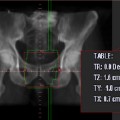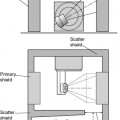Chapter 35 Medical complications of malignant disease
Cancer can cause a wide variety of medical and metabolic problems. These can be due to the physical presence of the tumour causing obstruction of, for example, the bile duct or a ureter, secretion of fluid into a body cavity, such as the pleura (an effusion), or local invasion of adjacent structures. Cancer and its treatment frequently predispose the patient to infection. In addition, cancer may cause constitutional disturbances which are not due to the local effect of the tumour but the consequence of secreted tumour products resulting in paraneoplastic syndromes. The problems of invasion into neighbouring structures are discussed in Chapter 15. In this chapter, we discuss the problems caused by effusions, infection and paraneoplastic syndromes (Table 35.1) in malignancy.
Table 35.1 Endocrine and paraneoplastic manifestations of malignancy
| System | Manifestation |
|---|---|
| Endocrine | Hypercalcaemia due to parathyroid hormone related peptide Water retention due to inappropriate ADH secretion Cushing’s syndrome due to ACTH Hypoglycaemia due to insulin-like proteins/somatomedins Gynaecomastia due to human chorionic gonadotrophin Thyrotoxicosis due to human chorionic gonadotrophin |
| Neurological | Peripheral neuropathy Cerebellar ataxia Dementia Transverse myelitis Myasthenia gravis Eaton–Lambert syndrome |
| Haematological/vascular | Anaemia Thrombophlebitis Thromboembolism Disseminated intravascular coagulation Polycythemia Non-bacterial endocarditis Red cell aplasia |
| Musculoskeletal | Polymyalgia rheumatica Arthralgia Clubbing Hypertrophic pulmonary osteoarthropathy |
| Dermatological | Pruritus Various skin rashes |
| Renal | Nephrotic syndrome |







